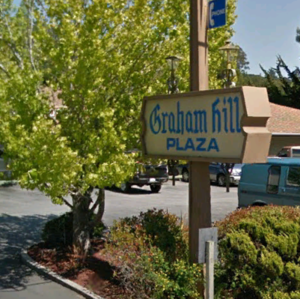History Pages: 7 - The Frontiersmen
For a table of contents, see History pages.
The Frontiersmen
The Louisiana Purchase of 1803 added a huge, largely unexplored territory west of the Mississippi River to the United States. Immediately, groups of explorers, traders, hunters, fur trappers, Indian fighters and other colorful characters set out for the western frontier. By the mid-1830s, quite a few of them had accumulated in the Monterey Bay area. One of these enterprising frontiersmen, Isaac Graham, soon opened a distillery at Natividad (now an area of strawberry farms just north-east of Salinas) so they’d have a place to socialize. An ambitious young Californio named Juan Bautista Alvarado persuaded Graham to organize his fellow frontiersmen into a company of riflemen to support Alvarado’s takeover of the California government. ‘Captain’ Graham’s Rifleros Americanos helped Alvarado capture Monterey and become governor, but he and the Americans didn’t remain allies for long. Sometime soon after the Alvarado coup, Graham and/or some of his friends moved north, establishing another distillery at Rancho Zayante. This group included one Job F. Dye, who many years later gave an account of his adventurous life.
The first Graham associate to make his mark in Santa Cruz was Joseph L. Majors. Majors became a Mexican citizen and, in 1839, married another of the Castro sisters, the poetically named Maria de los Angeles. That local connection benefited Majors later on, as he became a brother-in-law of El Ruso Bolcoff, Michael Lodge and William Buckle. Like them, Majors stayed to become a prominent citizen of Santa Cruz County.
More trouble found the foreigners in 1840. The presence of so many armed men of dubious loyalty made now-Governor Alvarado nervous, and he ordered a large group of them arrested and brought to Monterey. Those able to prove Mexican citizenship were released, including Majors, Lodge and Buckle. The rest, 50-100 mostly American and British men, were accused of plotting to overthrow the government (ironic, coming from Alvarado). The prisoners were put aboard ships, in chains, and sent to Mexico for trial. This action caused an international diplomatic incident that became known as ‘The Graham Affair’. Most of the men were acquitted in 1841 and returned to Monterey. Some left California for good, but Graham and others returned to Rancho Zayante.
Over the next few years, things started looking up for the former frontiersmen. Majors and his wife moved to Rancho San Agustin, where he built a grist mill that sold flour as far away as Santa Clara and Monterey. He later built a water-powered mill at or near the site of the old Mission mill, on Santa Cruz Creek (up the Laurel Street hill, near today's Babbling Brook Inn). The creek soon became known as Majors Creek, but today is called Laurel Creek (it’s the creek that feeds Neary Lagoon). Majors and/or his descendants also acquired an interest in Rancho Refugio, where today’s Majors Creek forms part of the northern boundary of Wilder Ranch State Park and reaches the Pacific where Scaroni Road loops off from Highway 1, at what used to be Red-White-and-Blue Beach (the infamous private nude beach and campground). The surrounding community used to be a train stop known as Majors.
Isaac Graham, meanwhile, built a water-powered sawmill on Zayante Creek (today’s Mount Hermon). To get his lumber to market, he built a wagon road to Santa Cruz, parts of which became today’s Graham Hill Road. Graham’s closest associate, Henry Naile, was later killed in a gunfight [in front of the Eagle Hotel on the Mission Plaza]. Dye left the area for a number of years before returning to Corralitos. Some of the remaining frontiersmen returned briefly to prominence in the next major event of Santa Cruz history: the Bear Flag Revolt.
Further Reading
- Bancroft, Hubert Howe. "Gutierrez, Castro, and Alvarado – Revolution: 1836", History of California, Chapter XVI (1886). [Free e-book at Google Books]
- Bancroft, Hubert Howe. "The Graham Affair", History of California (1886) [Free e-book at Google Books]
- Farnham, Thomas J. Life and adventures in California, and scenes in the Pacific Ocean (1846). [Free e-book at Google Books. A highly-romanticized account of ‘The Graham Affair’ begins in Chapter IV.]
- Leonard, Zenas. Leonard's narrative: adventures of Zenas Leonard, fur trader and trapper (1839). [Free e-book at Google Books - includes a first-person account of the Walker Party’s journey to California]
- Pokriots, Marion Dale. The Joseph Majors Story (available at SCPL)

